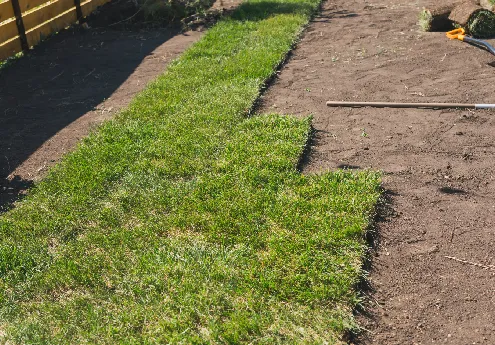
- Afrikaans
- Arabic
- Belarusian
- Bengali
- Czech
- Danish
- Dutch
- English
- Esperanto
- Estonian
- Finnish
- French
- German
- Greek
- Hindi
- Hungarian
- Icelandic
- Indonesian
- irish
- Italian
- Japanese
- kazakh
- Rwandese
- Korean
- Kyrgyz
- Lao
- Latin
- Latvian
- Malay
- Mongolian
- Myanmar
- Norwegian
- Persian
- Polish
- Portuguese
- Romanian
- Russian
- Serbian
- Spanish
- Swedish
- Tagalog
- Tajik
- Thai
- Turkish
- Turkmen
- Ukrainian
- Urdu
- Uighur
- Uzbek
- Vietnamese
cost fake grass
Nov . 05, 2024 06:27 Back to list
The Cost of Fake Grass A Comprehensive Overview
In recent years, artificial turf, commonly referred to as fake grass, has surged in popularity as a practical alternative to natural grass. Whether in residential backyards, sports fields, or commercial landscapes, fake grass offers an appealing solution for those seeking a lush, green appearance without the hassle of maintenance that comes with natural grass. While the initial appeal is undeniable, a thorough examination of the cost involved—both financial and environmental—raises pertinent questions about its long-term viability.
Initial Costs
The initial investment of fake grass can vary significantly, influenced by factors such as quality, installation complexity, and geographical location. On average, homeowners might expect to pay anywhere from $5 to $20 per square foot for high-quality synthetic turf, with the installation adding an extra $2 to $10 per square foot. Consequently, for a standard 1,000 square foot backyard, the total cost can run between $7,000 and $30,000. This upfront cost, while substantial, can be offset by the savings on water bills, lawn maintenance, and landscaping services over time.
Maintenance Expenses
One of the most significant advantages of fake grass is its low maintenance requirement. Unlike natural lawns, which necessitate regular mowing, watering, fertilization, and pest control, synthetic turf demands relatively little upkeep. Homeowners can expect to save on annual maintenance costs, which can average between $500 and $1,200 for natural grass, depending on the size and condition of the lawn.
However, it is essential to account for the occasional need for repairs and cleaning of synthetic turf. Over time, factors such as UV degradation, infill displacement, or damage caused by pets can necessitate repairs, which could range from minimal expenses to several hundred dollars, depending on the extent of damage.
Environmental Considerations
cost fake grass

Beyond the financial implications, the environmental impact of fake grass is a topic of ongoing debate. Proponents argue that switching to artificial turf conserves water, particularly in arid regions where drought is a pressing concern. For instance, a natural grass lawn can require up to 62,000 gallons of water annually, significantly more than what a synthetic lawn would need. Additionally, eliminating fertilizers and pesticides can lead to reduced chemical runoff into local waterways, benefiting local ecosystems.
Conversely, critics highlight the environmental costs associated with the production and disposal of synthetic grass. Most artificial turfs are made from petroleum-based products, contributing to fossil fuel dependency and greenhouse gas emissions. Furthermore, at the end of its lifecycle—typically around 15 to 20 years—disposing of old turf can present environmental challenges, as most artificial grass is not biodegradable and may end up in landfills.
Longevity and Value
When considering the cost of fake grass, it is vital to assess its longevity and value. High-quality synthetic turf can last anywhere from 15 to 25 years with proper care. In contrast, natural grass requires constant upkeep, with costs accumulating over the years. As the synthetic turf industry has evolved, the quality and durability of available products have also improved, providing consumers with a more appealing and lasting investment.
From a real estate perspective, properties with well-maintained artificial lawns can have increased marketability, particularly in regions where water conservation is valued. Homeowners may find that the installation of fake grass enhances curb appeal, potentially increasing property value.
Conclusion
As the cost of fake grass continues to be a critical topic in landscape design and water conservation discussions, it is crucial for consumers to weigh the initial investment against long-term savings and environmental impacts. While the advantage of minimal maintenance and water conservation is compelling, the synthetic grass industry's environmental footprint cannot be overlooked. Ultimately, the decision to install fake grass should involve careful consideration of both the financial costs and the broader implications for sustainability—ensuring that homeowners make informed choices that benefit both their lifestyle and the planet.
-
The Benefits of Artificial Turf for Indoors
NewsJul.15,2025
-
How Artificial Grass Suppliers Ensure Quality Products
NewsJul.15,2025
-
Artificial Grass and Pets: A Space for Relaxation
NewsJul.08,2025
-
Balcony & Outdoor Decoration with Artificial Grass
NewsJul.08,2025
-
Best Indoor Artificial Grass for Home
NewsJul.07,2025
-
Best Pet Turf for Dogs: Safe & Durable Artificial Grass Options
NewsJul.07,2025
Products categories









